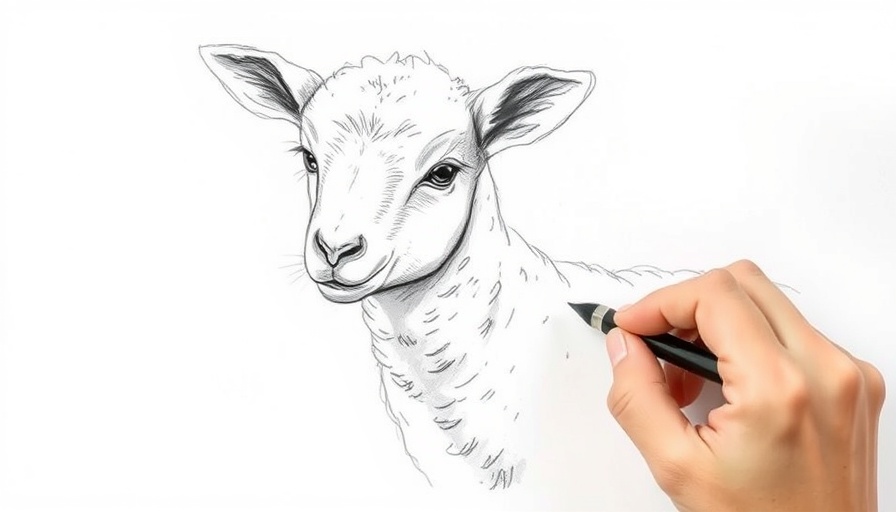
Understanding the Dual Nature of 'Avad'
The Hebrew word 'avad embodies a profound duality that resonates deeply within the values of the Seventh-day Adventist (SDA) faith community. As revealed in the discussions around its biblical context, 'avad implies both service and labor, carrying implications of both flourishing and oppression. This complex nature invites contemplation on how we engage in our work and the motives behind them.
In 'Why this Hebrew Word Can Mean Something Good – or Something Terrible', the discussion dives into the multifaceted meanings of 'avad, exploring key insights that sparked deeper analysis on our end.
Lessons from the Garden of Eden
In the Bible, 'avad is first mentioned in the context of the Garden of Eden, where God tasked humanity to 'avad and keep the garden. This work signifies not just physical labor but a relationship of stewardship and care—an opportunity for flourishing. For the members of the SDA faith community, this highlights how working within God’s creation can lead to fulfillment and purpose.
The Priesthood and Service
Similarly, the role of the Israelite priests exemplifies a life of 'avad as they served God in the temples. This model underscores a transformative aspect of service that aligns with the spiritual mission of the SDA community. By viewing our work through the lens of serving God and others, we can transform our daily tasks into acts of worship. How can we recognize our daily actions as opportunities to 'avad in a life-giving manner?
The Darker Side of 'Avad: Work as Slavery
However, 'avad is also associated with toil that can lead to suffering and oppression, as illustrated by the Israelites’ experience under Pharaoh in Egypt. Their backbreaking labor became a symbol of slavery—a stark contrast to the intended flourishing beauty of 'avad. This reminds us within the SDA faith community to be mindful of the environments we create: Are we fostering a culture of flourishing or enslavement?
God’s Redemptive Call to 'Avad
In the mission of freedom, God ultimately guides the Israelites to worship Him on a holy mountain, indicating that the purpose of 'avad is tied to redemptive relationship and life-giving work. For contemporary SDA members, this illustrates a pivotal lesson: when we bring our struggles to God, we are invited to turn our labor into joys of service, which can reinforce our community bonds and personal fulfillment.
Finding Balance in Our Lives
This discussion on 'avad challenges us to find a balance in our lives. It raises questions: What motivates our work? Are we cultivating something meaningful, or are we trapped in cycles of toil that feel like slavery? The SDA faith community teaches us to reflect upon our actions continuously and to seek God’s guidance in our daily lives.
Practical Tips for Meaningful 'Avad in Daily Life
One way to integrate the principles of 'avad into our lives is by adopting intentional practices that enhance both our physical and spiritual well-being. Here are some practical suggestions for personal transformation:
- Community Involvement: Seek out opportunities to serve within your community—whether through volunteering, participating in church activities, or helping a neighbor. These acts of service can provide fulfillment as we embody the spirit of 'avad.
- Mindfulness in Work: Approach your daily tasks with intention. Whether working at a job or fulfilling roles at home, infuse your actions with purpose, and remember that every task can be done for a greater good.
- Prayer and Reflection: Engage in regular prayer and reflection focused on your work and service—asking God how you can align your daily activities with His desires for your life.
Invitation to Reflect on Your Relationship with 'Avad
As we explore the dual nature of 'avad, let us challenge ourselves to re-examine our motivations and the fruits of our labor. Are you living out a life of flourishing in your work? How can you embrace God's redemptive purpose in your activities this coming week? Join a conversation with friends or fellow believers to delve deeper into these questions and to encourage one another on this journey.
In conclusion, by understanding 'avad's nuances, we can transform our approach to work and service—embracing not only the positive aspects of it but also recognizing and challenging opportunities for oppression. Let’s commit to fostering environments of growth and support within our community, honoring the divine purpose in everything we do.
 Add Row
Add Row  Add
Add 




Write A Comment